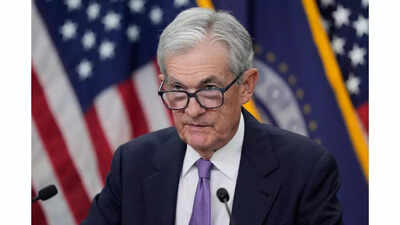Key Takeaways
- Fed Chair Powell acknowledges AI is causing real job losses and hiring freezes
- Despite low unemployment, net job creation is nearly zero after adjustments
- AI creates a policy dilemma with rising productivity but stagnant hiring
- Economy showing K-shaped recovery with AI benefiting wealthy more
Federal Reserve Chairman Jerome Powell has openly acknowledged that fears about artificial intelligence eliminating jobs are legitimate, calling it a “real and difficult issue” for the U.S. economy. Speaking after the Fed’s latest policy meeting, Powell revealed the labor market might be weaker than surface indicators suggest.
Despite a 4.3% unemployment rate, Powell stated that “job creation is pretty close to zero” after data adjustments. He directly linked this weakness to companies using AI technology to maintain output with fewer employees.
Companies Citing AI for Hiring Pauses
Powell confirmed that many large corporations have recently implemented hiring freezes or job cuts, explicitly naming AI as the reason. “Much of the time they’re talking about AI and what it can do,” he told reporters. “We’re watching that very carefully.”
Not a Dot-Com Bubble Repeat
While some compare the current AI investment surge to the dot-com bubble, Powell dismissed this analogy. “These companies actually have earnings,” he explained, noting that AI projects represent long-term productivity investments rather than short-term speculation.
Fed’s Policy Dilemma
The AI boom creates a significant “policy dilemma” for the Federal Reserve. While productivity increases, hiring remains stagnant. “We have upside risks to inflation, downside risks to employment,” Powell stated. “This is a very difficult thing for a central bank.”
K-Shaped Economic Divide
Powell described the economy as showing “K-shape” characteristics, where wealthier households and large corporations benefit disproportionately from AI-driven growth. Meanwhile, lower-income consumers are struggling. “Consumers at the lower end are buying less and shifting to lower-cost products,” he observed.
“There is no risk-free path for policy,” Powell concluded. “We’re navigating the tension between our employment and inflation goals as carefully as we can.”




